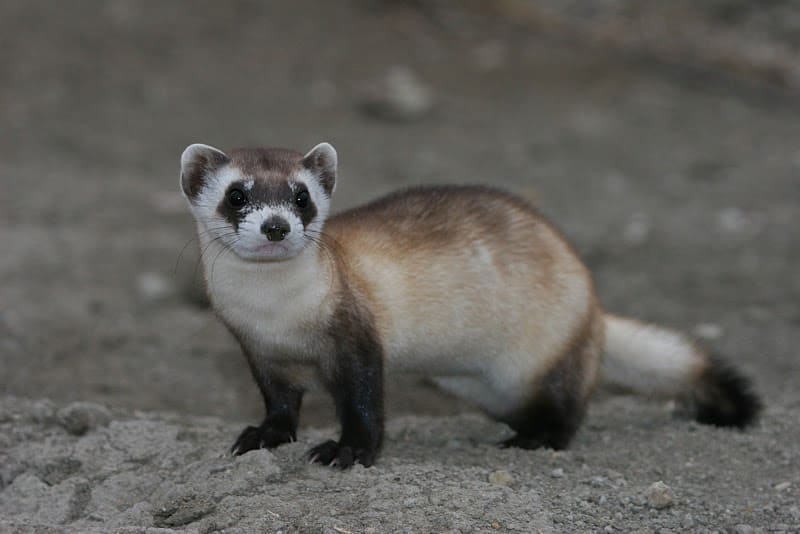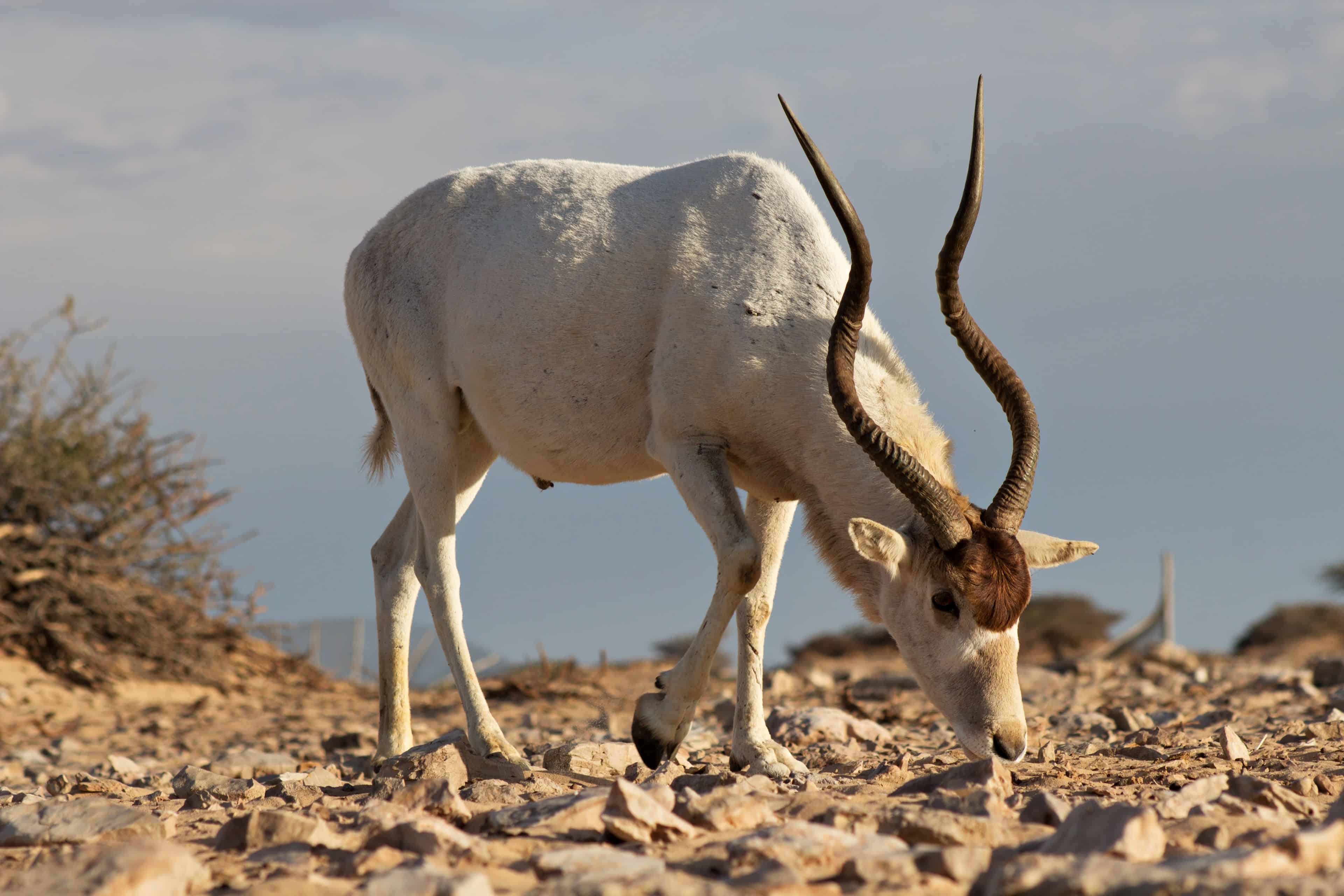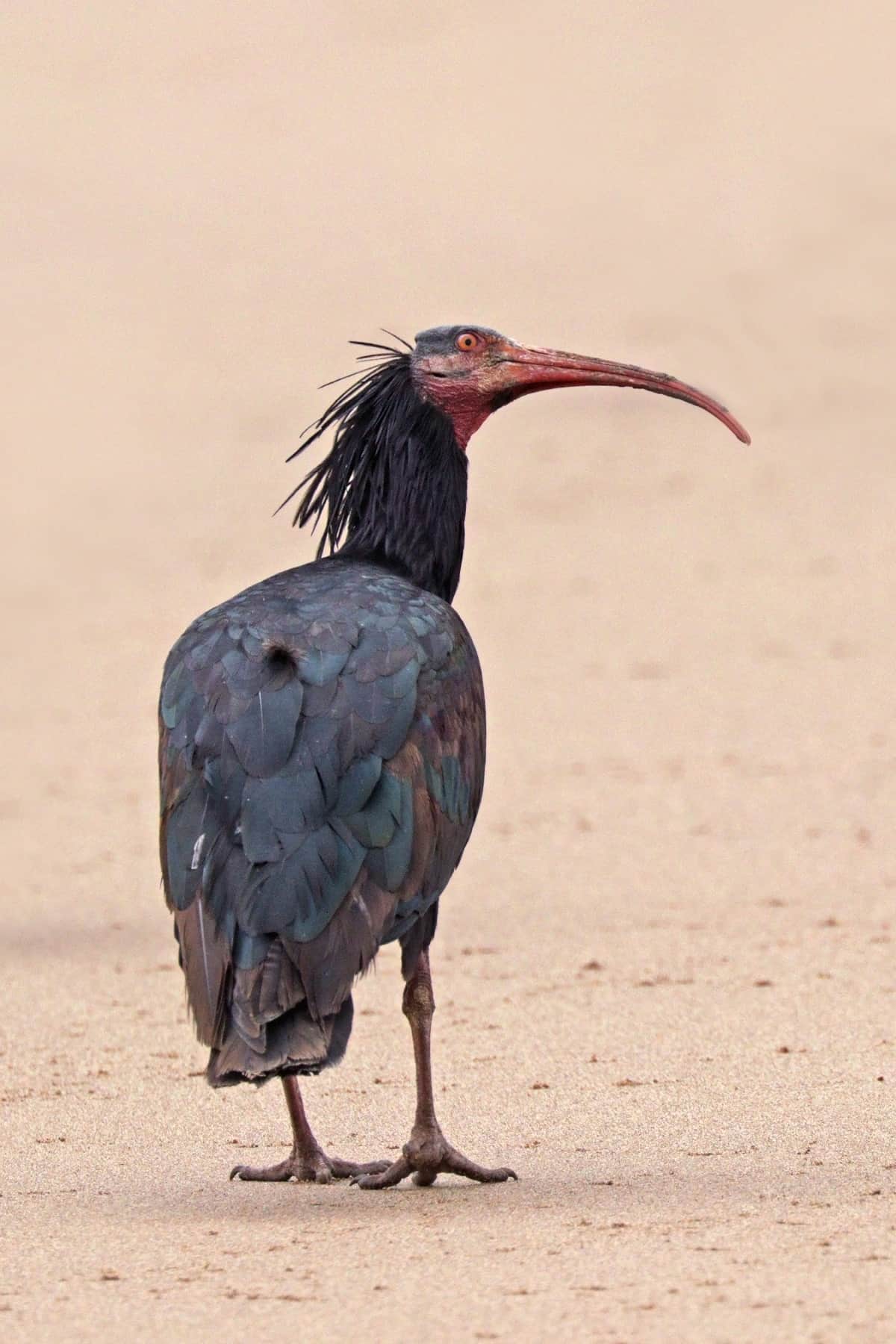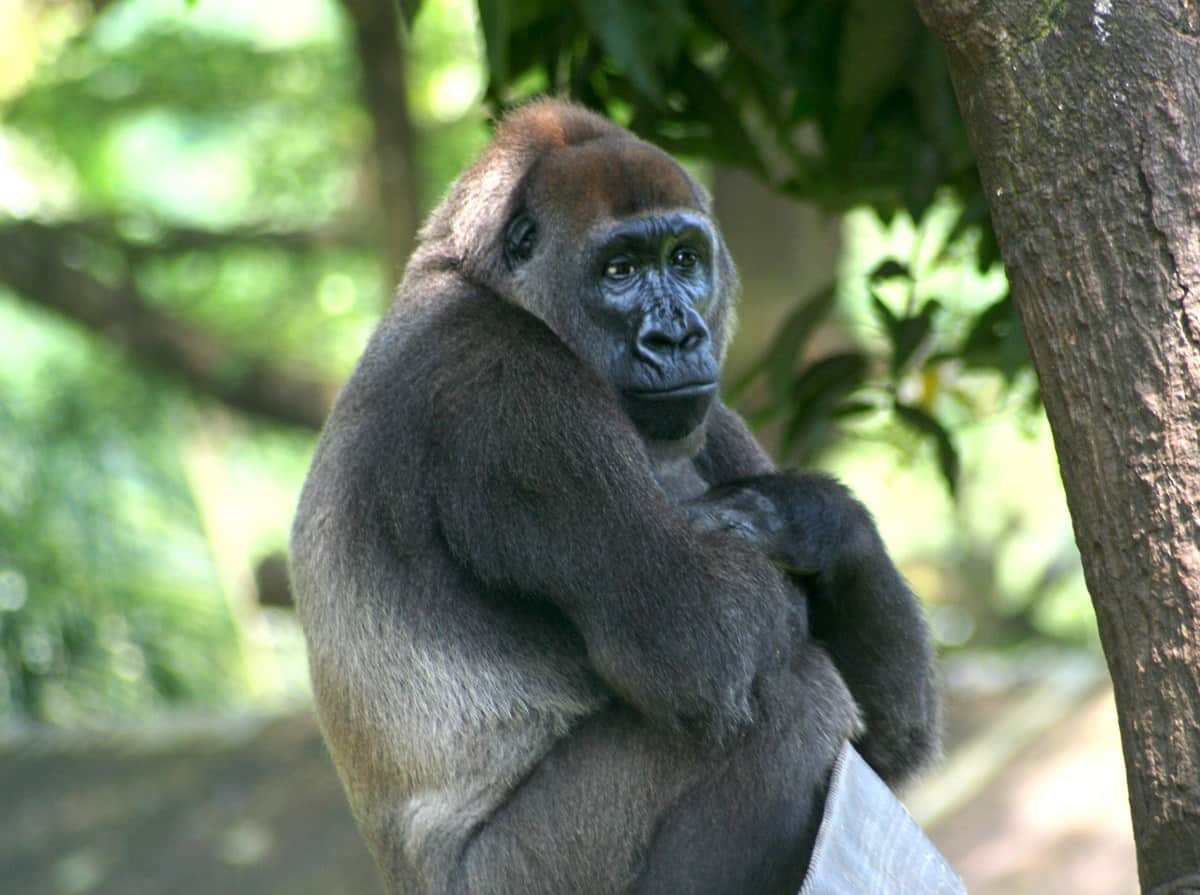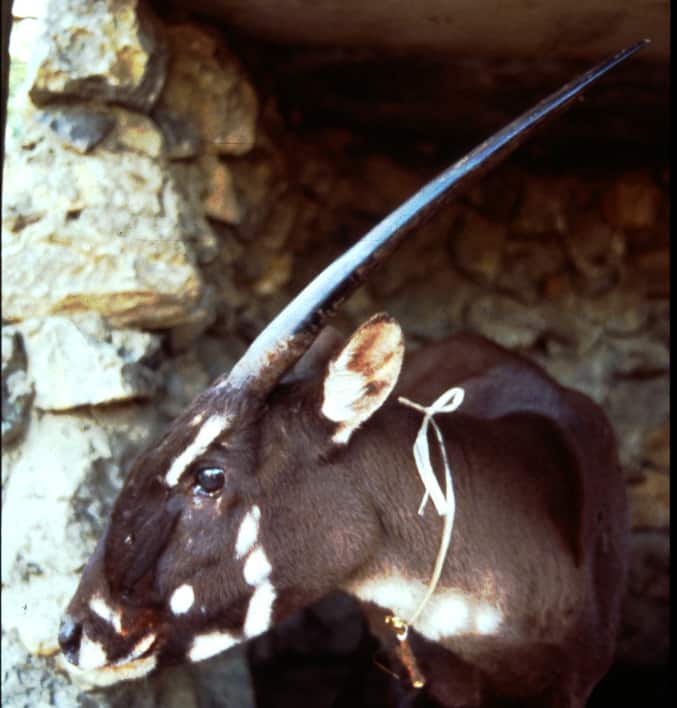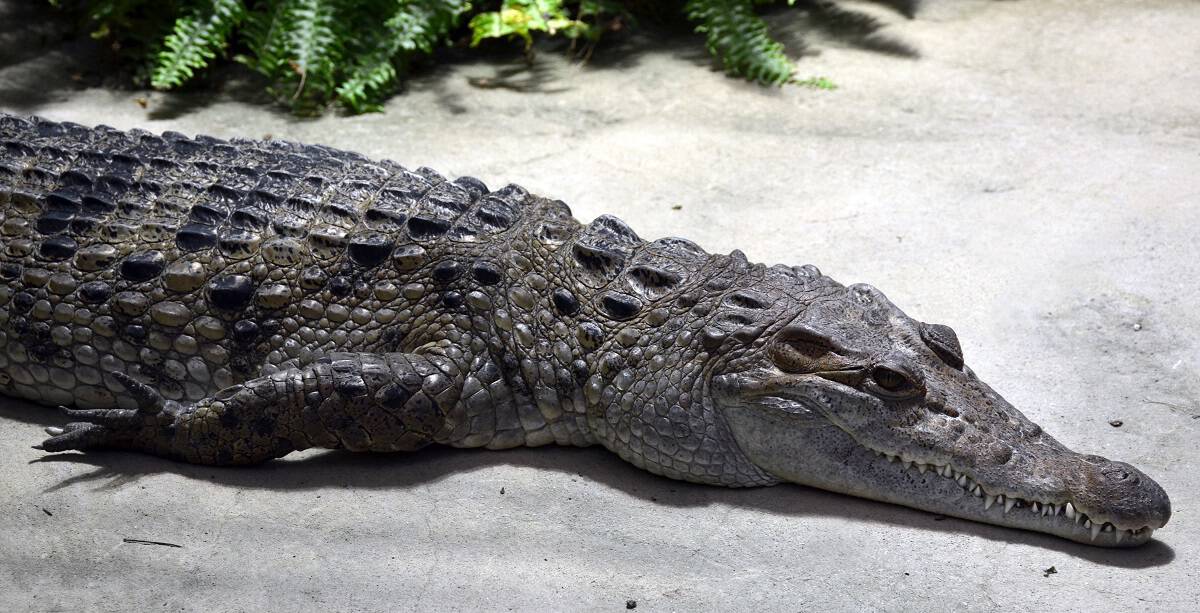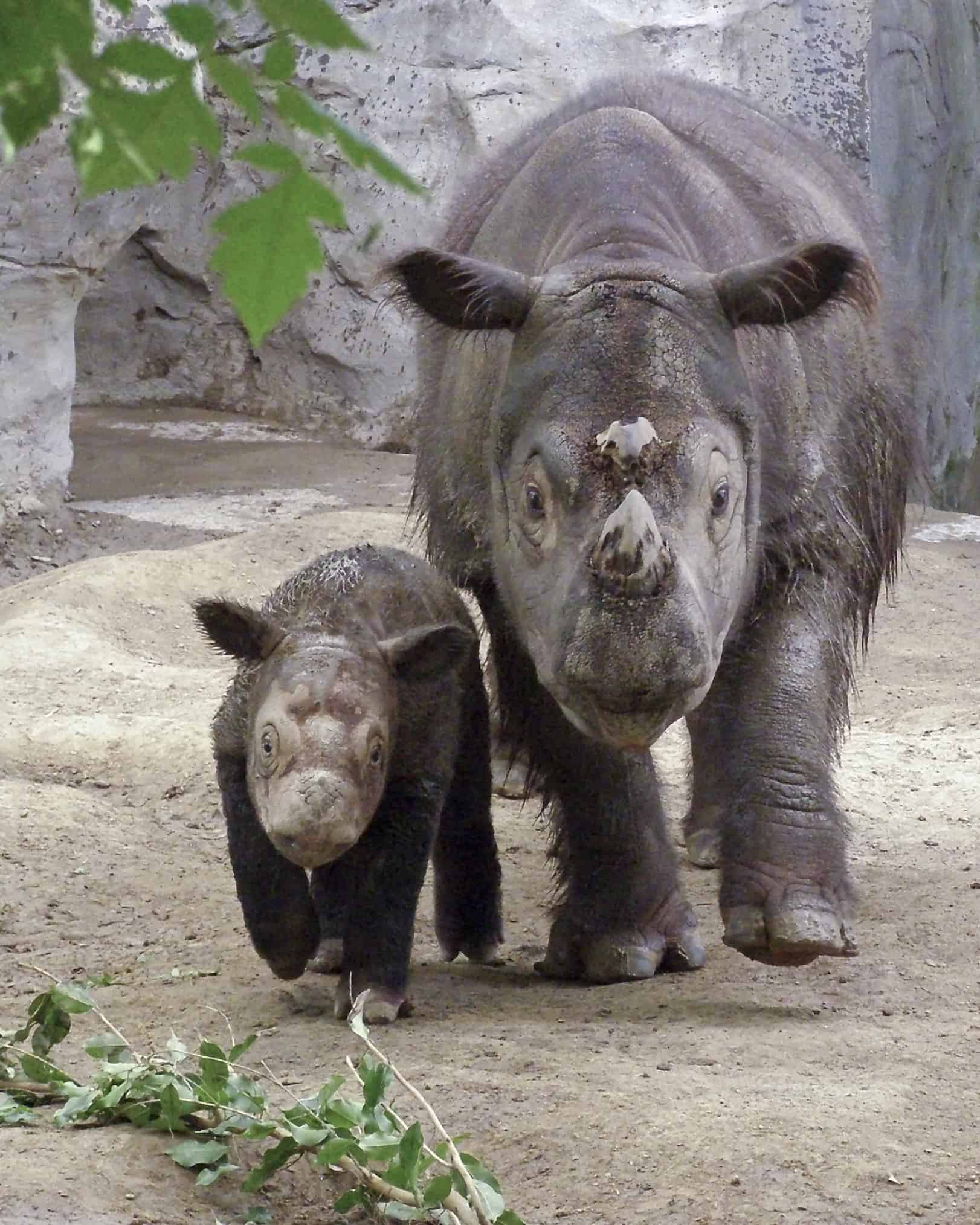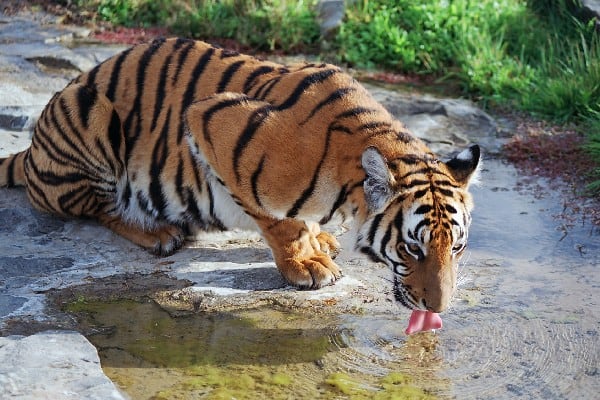Animals are loved by nearly everyone in the world, yet humans are the biggest threat to their survival. Every single one of the animals on this list is not only rare, but also critically endangered or “just” endangered. The low population of these rare animals is primarily due to habitat loss, hunting, or accidental death caused by human activities. While conservationists have successfully bred some of these animals, others are not so lucky and are on the brink of complete extinction. Hopefully, with more awareness, including the information on this list, we can see some of these rare animals recover in the future.
As of September 2019, the information about the population estimates of these animals is as accurate as possible and will be updated as needed in the future.
- Black-footed Ferret
- Addax
- Northern Bald Ibis
- Cross River Gorilla
- Saola
- Amur Leopard
- Philippine Crocodile
- Sumatran Rhino
- South China Tiger
- Vaquita
Location: Arizona, Wyoming, South Dakota, and Montana, USA; previously native to the Great Plains of North America
Current Conservation Status: Endangered
Scientific Name: Mustela nigripes

photo source: Wikimedia Commons via USFWS Mountain-Prairie
However, the population of the Black-footed Ferret sharply declined throughout the 20th century and was declared extinct in 1979. A few years later, in 1981, the Black-footed Ferret was re-discovered by a dog in Wyoming. That remaining population only survived until 1987 and the Black-footed Ferret was extinct in the wild again. Since then, a captive breeding program was launched by the United States Fish and Wildlife Service and thousands of Black-footed Ferrets were re-released in Arizona, Wyoming, South Dakota, and Montana throughout the last few decades. While, the program has mostly been a success, recent updates only put the wild Black-footed Ferret population between 300 to 400 individuals.
Did You Know?
Black-footed Ferrets primarily hunt prairie dogs and because of their dependence on the other species, the population of Black-footed Ferrets is heavily impacted by the wild population of prairie dogs, which has also been in decline in recent years.
Location: Sahara Desert
Current Conservation Status: Critically Endangered
Scientific Name: Addax nasomaculatus

photo source: Wikimedia Commons via Haytem93
In the past, the Addax was common in North Africa, native to Chad, Mauritania, Niger, Algeria, Egypt, Libya, Sudan, and the Western Sahara. Wild Addax populations have been in severe decline due to unregulated hunting. In recent years, with the success of breeding programs, Addax have been reintroduced to Morocco and Tunisia on wildlife preserves.
Did You Know?
Addaxes only excrete dry feces and concentrated urine because they use every bit of water that they eat.
Location: Southern Morocco and Syria; previously also found throughout Europe, North Africa, and other parts of the Middle East
Current Conservation Status: Endangered
Scientific Name: Geronticus eremita

photo source: Wikimedia Commons via Charles J Sharp
Today, most of the wild population of Northern Bald Ibises live in Morocco with a few possibly left alive in Syria. The Northern Bald Ibis has been regionally extinct in Europe for over 500 years, but reintroduction programs are currently underway.
Did You Know?
The Northern Bald Ibis is an ancient bird species with fossils dating to the Holocene (c.10,000 years ago), middle Pleistocene (c. 900,000 years ago), and even as far back as Pliocene-Pleistocene boundary (c. 1.8 million years ago).
Location: Forested hills and mountains of the Cameroon-Nigeria border region at the headwaters of the Cross River (Nigeria)
Current Conservation Status: Critically Endangered
Scientific Name: Gorilla gorilla diehli

photo source: Wikimedia Commons via Julielangford
The biggest threat to the survival of the Cross River Gorilla is habitat loss due to human activities. Also, the Cross River Gorilla is threatened by bushmeat hunting by locals. Due to the hunting, Cross River Gorillas are very fearful of humans and are very rarely observed.
Did You Know?
Cross River Gorillas live in small scattered groups that rarely, if ever, interact with one another, which has led to inbreeding. This results in a loss of genetic diversity and weaker gene pool and also negatively impacts the already small population of Cross River Gorillas.
Location: Annamite Range of Vietnam and Laos
Current Conservation Status: Critically Endangered
Scientific Name: Pseudoryx nghetinhensis

photo source: IUCN Red List via William Robichaud
Researchers have tried to keep Saolas in captivity a few times, but each of these captive Saolas eventually died. This has led conservationists to believe that Saolas cannot survive captivity and thus a breeding program can’t be established.
Did You Know?
Most of the information known about the Saola comes from William G. Robichaud, who managed to keep a female Saola in captivity for about 15 days before she died of unknown causes. According to Robichaud’s observations, the Saola was not afraid of humans, only dogs.
Location: Primorye region of southeastern Russia and northern China
Current Conservation Status: Critically Endangered
Scientific Name: Panthera pardus orientalis

photo source: Wikimedia Commons via William Warby
Amur Leopards have relatively long lifespans, living for about 10 to 15 years in the wild and 20+ years in captivity. Unfortunately, like all the animals on this list, the Amur Leopard population faces many threats, including habitat destruction, illegal poaching, conflicts with humans, and a lack of genetic variation – since there are so few Amur Leopards left, there is a lot of inbreeding, which results in weaker offspring.
Did You Know?
The rosettes or spots on Amur Leopards are larger, more widely spaced, and have thicker black borders than those found on the other species of leopards.
Location: fragmented habitats on the islands of Dalupiri, Luzon and Mindanao in the Philippines
Current Conservation Status: Critically Endangered
Scientific Name: Crocodylus mindorensis

photo source: Wikimedia Commons via Vassil
Another thing hurting the Philippine Crocodile is public perception. The crocodiles have been labeled as man killers/eaters by the local populace and have been killed for this negative view. However, in recent years, conservationists have been working to change public perception and have successfully bred and released Philippine Crocodiles into protected habitat sites.
Did You Know?
Killing a Philippine Crocodile is illegal and comes with a maximum fine of of ₱100,000 (equivalent to about $2,500).
Location: Sumatra and Borneo (used to be found in India, Bhutan, Bangladesh, Myanmar, Laos, Thailand, Malaysia, other parts of Indonesia, and China
Current Conservation Status: Critically Endangered
Scientific Name: Dicerorhinus sumatrensis

photo source: Wikimedia Commons via Alan (wAlanb)
It is believed that Sumatran Rhinos have been a fairly vulnerable species for the past 9,000 years when a climate shift took place in their natural habitat. Since then, Sumatran Rhinos have failed to bounce back and face even more threats today. While there has been some success with breeding Sumatran Rhinos in captivity, in general, they have a hard time surviving outside of their natural ecosystem. Currently, there are still a few captive Sumatran Rhinos.
Did You Know?
Scientists believe that the Sumatran Rhino is the most primitive (oldest) rhino species because of its hair and other ancient features. Also, the Sumatran Rhino is the closest living relative to the woolly rhinoceros that lived in the frigid lands of Europe and Asia during the Ice Age.
Location: Southern China
Current Conservation Status: Critically Endangered
Scientific Name: Panthera tigris tigri

photo source: Wikimedia Commons
The South China Tiger (also known as the Amoy tiger, South Chinese, Chinese and Xiamen tiger) is unfortunately the most threatened and vulnerable tiger species in the world. Scientists have declared that the South China Tiger is functionally extinct in the wild and has not been seen outside of captivity in more than 25 years.
While there are no wild South China Tigers left, thankfully there are about a hundred or so in captivity as part of breeding programs in China. In 2007, the first South China Tiger was born outside of China at the private reserve known as Laohu Valley Reserve in South Africa. More tigers have been born at Laohu Valley since then.
Did You Know?
There is genetic evidence that suggests that a majority of the captive South China Tigers are not “pure” and that they had been cross-bred with other subspecies of tigers.
Location: Northern part of the Gulf of California
Current Conservation Status: Critically Endangered
Scientific Name: Phocoena sinus

photo source: Wikimedia Commons via Paula Olsen
Since the Vaquita was first discovered in 1958, its numbers have always been pretty low. Vaquitas are the smallest species of porpoise and easily get caught in gillnets (nets that catch fish by their gills) used by illegal fishing operations. Also Vaquitas have such a small population because they are only found in one area of the world, the northern part of the Gulf of California. Additionally, there are no Vaquita in captivity and there is currently no successful breeding program to help bring their numbers back up.
Did You Know?
While not much is known about the Vaquita, the maximum known lifespan of an individual Vaquita was a female who lived 21 years.

